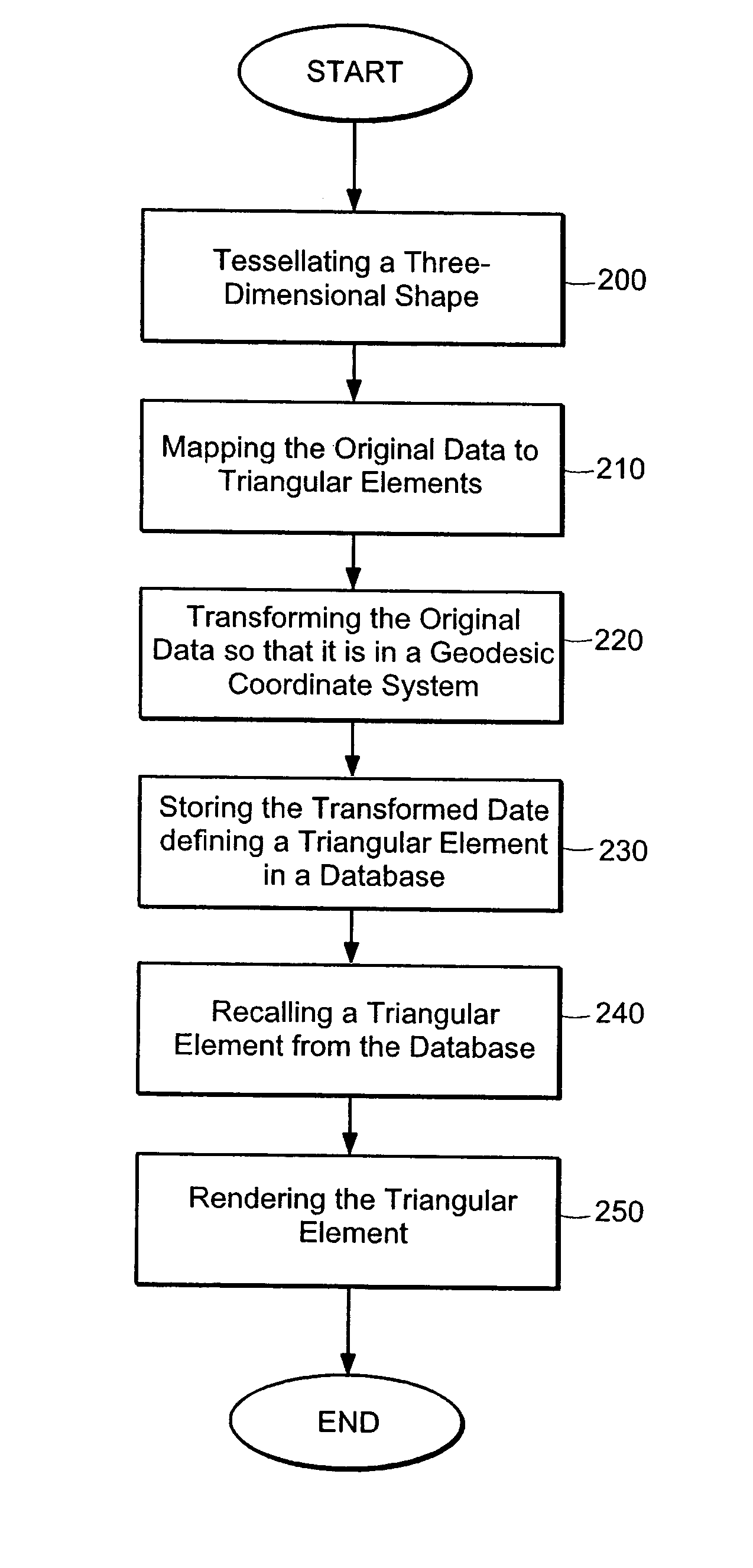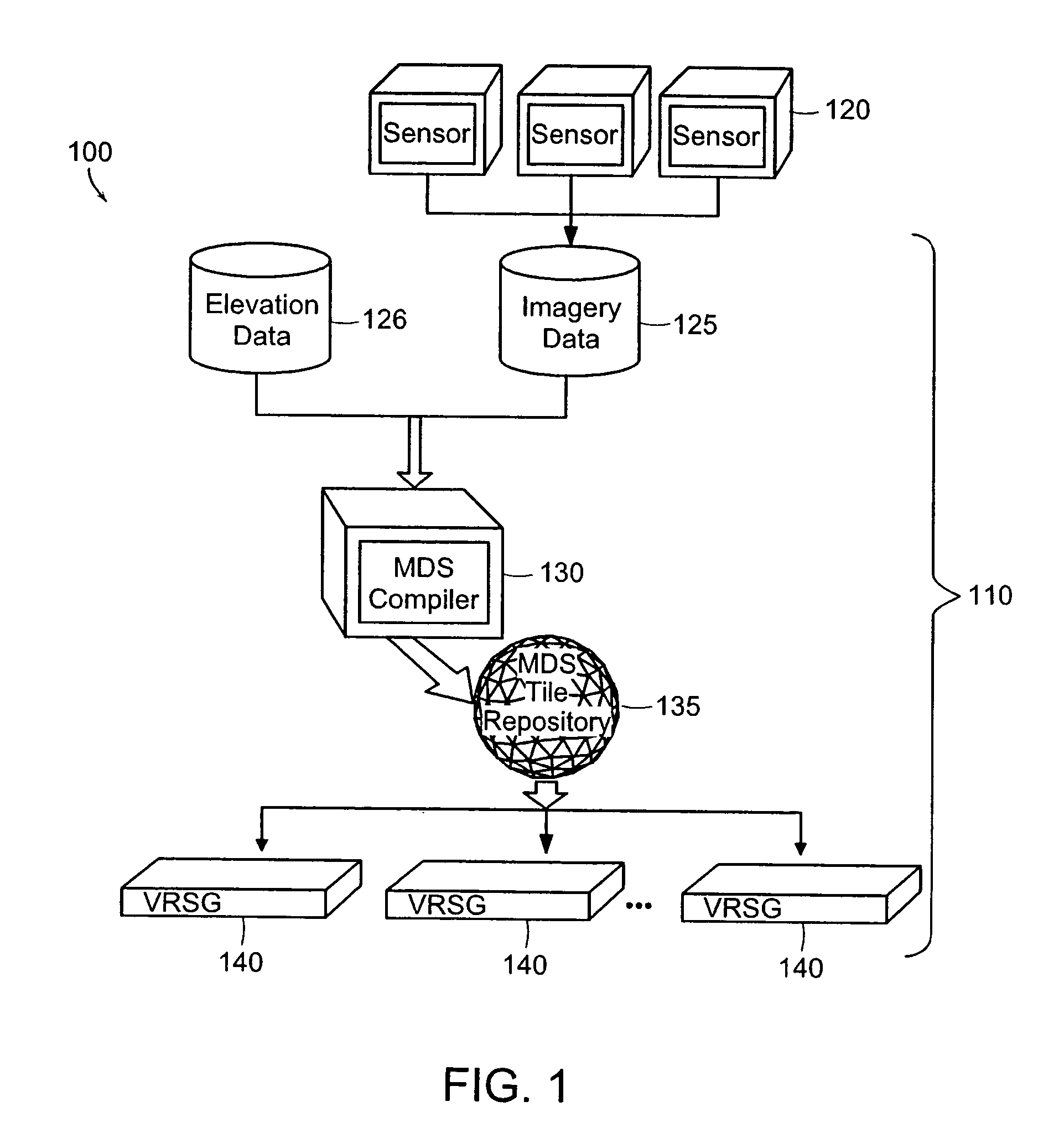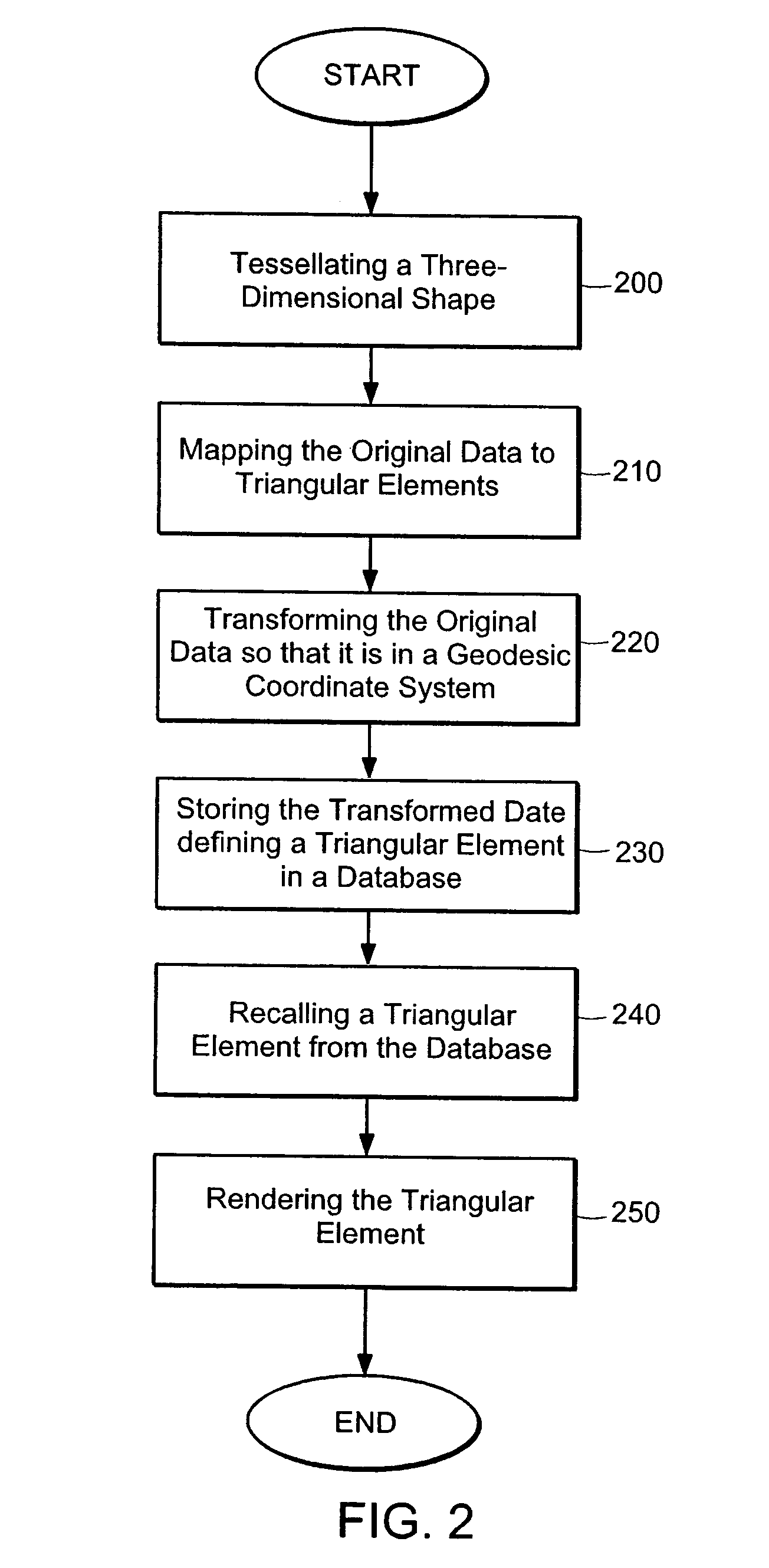Three-dimensional visualization architecture
a three-dimensional visualization and architecture technology, applied in the field of virtual terrain architectures, can solve the problems of classic tiling schemes used for database paging that do not map well into the geocentric environment, and the data cannot be rendered in a geocentric coordinate system
- Summary
- Abstract
- Description
- Claims
- Application Information
AI Technical Summary
Benefits of technology
Problems solved by technology
Method used
Image
Examples
Embodiment Construction
[0020]The following terms in this disclosure and the appended claims shall have the meaning presented here unless the context indicates otherwise. The term “terrestrial” and “terrestrial data” shall refer to land-based data. Terrestrial may refer to earth-based data or data from another celestial body. Terrestrial data case may include both imagery and elevation data. The term “pagable” shall refer to data within a computer imagery rendering system that can be independently rendered on a display device without accessing other stored data. Thus, a pagable primitive has associated data that can be rendered by a rendering engine by accessing the file containing the pagable primitive data. The term “perspective” or “perspective view” shall refer to at least the position, orientation, and field of view that are used by a rendering engine for rendering imagery. Additionally, a perspective may also include the maximum viewing distance. The term “spheroid” shall refer to a substantially sph...
PUM
 Login to View More
Login to View More Abstract
Description
Claims
Application Information
 Login to View More
Login to View More - R&D
- Intellectual Property
- Life Sciences
- Materials
- Tech Scout
- Unparalleled Data Quality
- Higher Quality Content
- 60% Fewer Hallucinations
Browse by: Latest US Patents, China's latest patents, Technical Efficacy Thesaurus, Application Domain, Technology Topic, Popular Technical Reports.
© 2025 PatSnap. All rights reserved.Legal|Privacy policy|Modern Slavery Act Transparency Statement|Sitemap|About US| Contact US: help@patsnap.com



